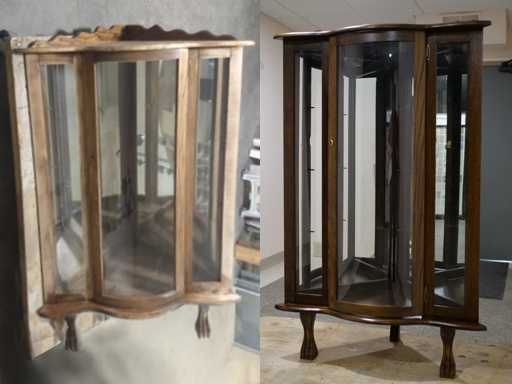Overview
An aged corner cabinet was given a face-lift in our refinishing room.
In Depth
As a material, wood can support a wide array of colors. This is one of the reasons that is has been so ubiquitous as a material for creating furniture. These tones are created through a combination of the wood’s natural hues and a variety of chemicals or paints. In this particular case, a beveled corner cabinet had aged to the point where its colors had faded.
To restore the cabinet to its former glory, its decayed outer coatings must be removed. After the glass and metal hardware are taken out, the cabinet undergoes a process called wood stripping. What method of stripping is required depends upon the type of wood and the nature of the previous finish. In this case, the outer layers of debris were cleared through the careful application of chemical solvents. What remains afterwards is the original surface of the cabinet. From this point, the wood is coated in the appropriate color (what is known as staining). To create a shining surface that is protected from debris, a multi-layer clear finish coating is applied over the stained wood.
With the process complete, the glass windows were reinserted into the cabinet. This elegant piece of furniture is ready for use once more.


















Let's Connect